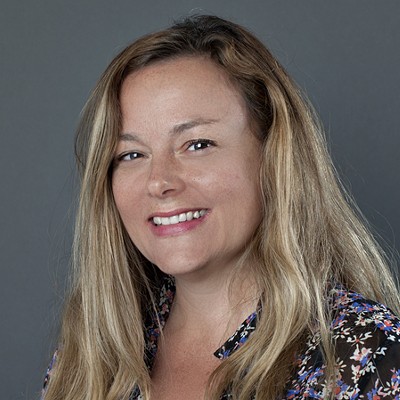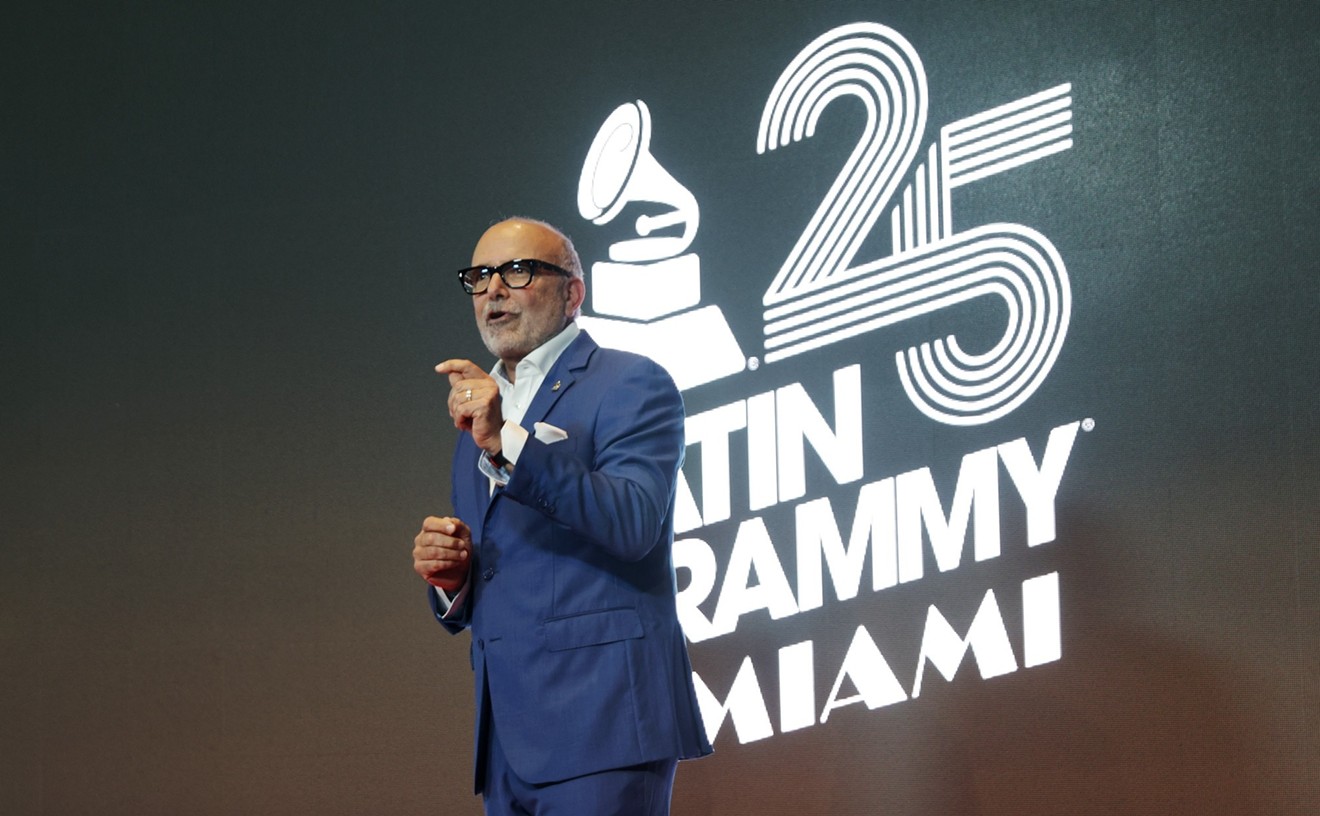It's easy to get depressed about the state of the world today, what with the scourges of terrorism, global warming, and Sandy Hook hoaxers.
Well, there's an antidote to that: 15-year-old Hannah Herbst.
This smiley, bright, and poised-beyond-her-years ninth-grader from Boca Raton has invented a device called an "ocean energy probe" that uses ocean currents to power a generator. She intends to mass-produce her invention and give it away to needy people in developing countries who could use it to power lights or small medical devices. People are noticing: She won $25,000 in a contest sponsored by 3M and Discovery in October.
"I wasn't really interested in science until seventh grade," Herbst says. That's when her father, a dean in the college of education at Florida Atlantic University, signed her up for a summer engineering and technology camp — even though she had been far more interested in theater.
"I got there, and I was the only girl," she remembers. On the first day, students were told they would build a robot. "I was so intimidated," she recalls. But by the end of the summer, she knew how to put it together herself.
Herbst has attended the Alexander D. Henderson University School/FAU High School — a unique public K-8 and high school on the FAU campus that operates under the state university system rather than the local school board.
In eighth grade, she built "sumo bots" — fighting robots — and programmed them not to go out of a ring. She also won a competition writing technical instructions so that a classmate could follow the directions and build a project.
Throughout this time, her church had teamed with the Samaritan's Purse program Operation Christmas Child to send gifts to kids in developing countries. Soon, through Compassion International, young church members were connecting with pen pals in needy countries. Herbst was paired with a 9-year-old girl in Ethiopia. "She didn't have access to electricity," Herbst says. "Seventy percent of the world's people are living in energy poverty." Herbst realized hat here in Boca, she took for granted things like lights or sewage treatment. "That's when I started thinking about renewable energy," she says.
One day, while fishing with her dad, she noticed tidal flux —- the change from high to low tide as the result of the moon pulling on the Earth. Something she'd read in a science pamphlet led to her having a "eureka moment": Since the changing tide carries current energy through water in a manner that's consistent, she thought, "maybe I can use it to improve the lives of people in developing countries." She imagined using the energy from the ocean current to power a small generator that could provide electricity. Just a little juice could go a long way: with just a bit of electricity, people could power car batteries, turn on reverse-osmosis pumps that would turn salt water into potable water, power medical devices like blood centrifuges, or help operate maritime navigation instruments.
Her eighth-grade mechatronics teacher encouraged her to build a prototype. "He gave me tools and materials and said, 'Have at it!'" She got started.
Soon she heard of the Discovery Education 3M Young Scientist Challenge and sent in a video describing her project:
Judges whittled the entries down to ten and matched those entrants with mentors. Herbst was paired with Jeffrey Emslander, a chemical engineer at 3M for 30 years who works in the corporate lab in Minneapolis, mostly on developing plastic films. They Skyped each week.
"I can't imagine having a better experience," says Emslander. Herbst's passion was contagious. "She gets excited easily. You can tell she really enjoys it. Like when she gets a new motor or a new generator in the mail — she's so excited." He remembers a Saturday when she spent hours experimenting with 3D printers. "She was just in her glory."
Herbst had already gotten permission from the Coast Guard to test her device before she even built a prototype. Her first design had a very small propeller and bulky housing. "Cavitation occurred," she explains. "Bubbles in the housing didn't permit the full rotation of the propeller."
She worked with Emslander and her schoolteachers to improve it. To make her second design, she used a 3D printer to make a three-bladed propeller and a rubber pulley system. (She's currently exploring making kits of that prototype for other kids to use in science classes.) It wasn't efficient, though. The third one, she made from 90 percent recycled materials including two-liter bottles. She added two DC generators that cost $6 apiece. Put it in water when the current is moving and it will power LED lights.
"I almost cried when she had that prototype," Emslander says. "It was so cool." It creates energy in the same way that a windmill does —- but "instead of large scale, it's small scale."
Herbst loved that her mentors "never gave me answers — they just guided me in the right direction. That was so valuable to the scientific process. They would never do anything for me. They believed I could think on my own."
Now Herbst plans to mass-produce her probes and give them away in the developing world, where the energy could help kids study at night or power small medical devices. After winning the 3M Young Scientist Challenge in October, Herbst got teamed up with 3M's Africa team, which will help her produce and deploy them. "I don't need to make a profit," she says.
Since winning, she's traveled to New York, San Francisco, and Minneapolis for meetings and media appearances. She's visited Google's headquarters and met Apple execs. "It feels great!" she says. (Also worth noting: Arthur Frigo III from Jupiter, an eighth-grader at Turtle River Montessori School, placed in the contest too and won $1,000.)
Herbst knows that girls in science are outnumbered. At a science fair, when people looked at her board, "they assumed I was a guy. I've been ostracized plenty of times. I ignore them because in the end it's not going to matter whether you're a guy or a girl. It's about what you can do, what you can apply to your field."
Generally speaking, she thinks that to draw kids into science, "parenting has an aspect — like my dad forcing me to stay in that camp. I was interested in theater, which I think worried my dad." She suggests nurturing kids' passions, whatever they may be: "I'm going to be whatever I want to be, and I'm going to be great at it — raise kids with that mentality."
Emslander agrees that getting kids into science depends on a mix of opportunity and encouragement. He got into engineering only when a teacher suggested he might like it — before that, he hadn't even known what engineering was. He suggests giving kids the opportunity to do science projects "in a nonthreatening way" — not as a requirement. "It's fun and rewarding," he says. "Science should be considered like sports."
And, he notes, it usually affords a steady and financially comfortable career. He's traveled all over the world. He adds that in addition to Post-It Notes, 3M makes medical equipment and components in computers and cell phones. And that's a wonderful thing about his career — the opportunity to "make people's lives better in some ways."
Herbst is already way ahead on that note. She has already given away $6,000 of her winnings, including $3,000 to Compassion International and $1,000 to the family of her pen pal, whom she hopes to meet someday. The rest, she's saving for college.
"It sounds sort of corny," says Emslander, "but really, it's been a blast."
[
{
"name": "GPT - Billboard - Slot Inline - Content - Labeled - No Desktop",
"component": "16971022",
"insertPoint": "2",
"requiredCountToDisplay": "2"
},{
"name": "Editor Picks",
"component": "15769925",
"insertPoint": "4",
"requiredCountToDisplay": "1"
},{
"name": "Inline Links",
"component": "16575154",
"insertPoint": "8th",
"startingPoint": 8,
"requiredCountToDisplay": "7",
"maxInsertions": 25
},{
"name": "GPT - Rectangle 2x - Slot Auto-select - Labeled",
"component": "15782206",
"insertPoint": "8th",
"startingPoint": 8,
"requiredCountToDisplay": "7",
"maxInsertions": 25
},{
"name": "Inline Links",
"component": "16575154",
"insertPoint": "8th",
"startingPoint": 12,
"requiredCountToDisplay": "11",
"maxInsertions": 25
},{
"name": "GPT - Leaderboard to Tower - Slot Auto-select - Labeled",
"component": "15782207",
"insertPoint": "8th",
"startingPoint": 12,
"requiredCountToDisplay": "11",
"maxInsertions": 25
}
]











